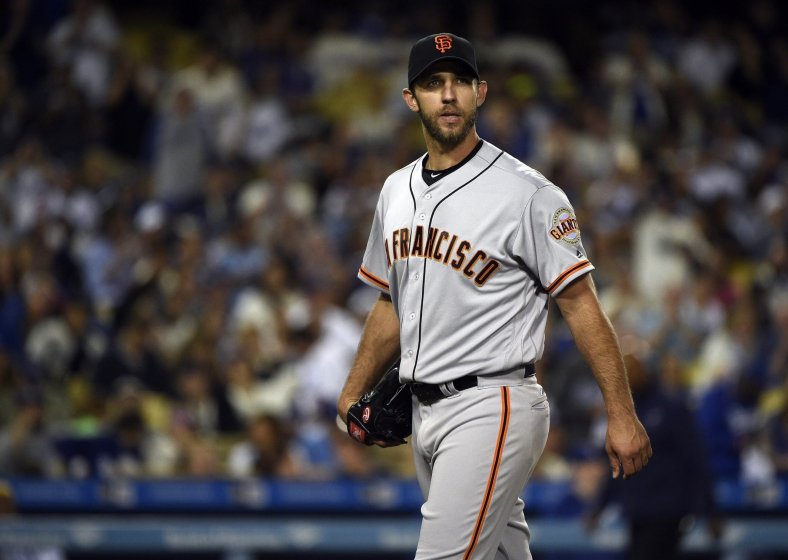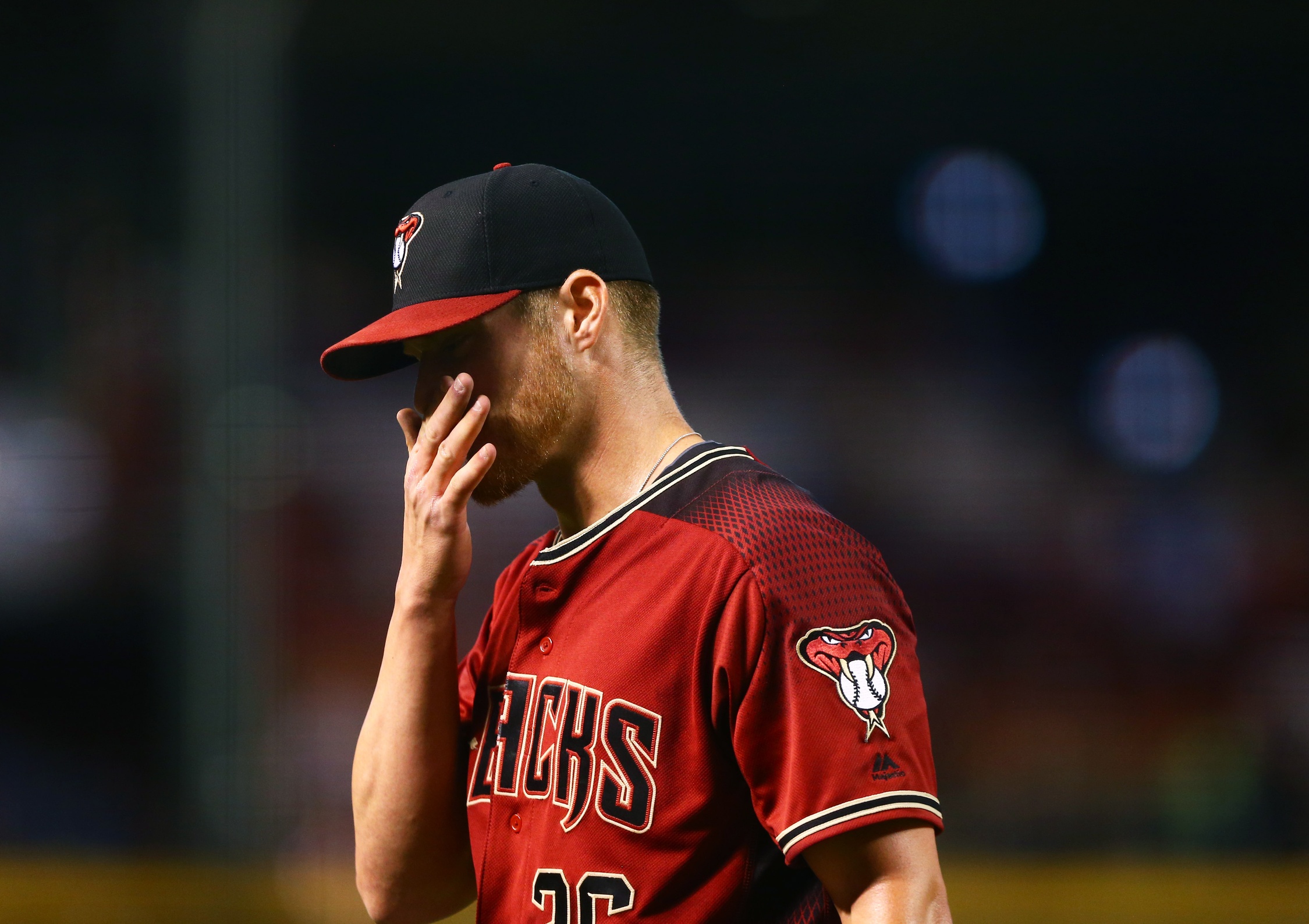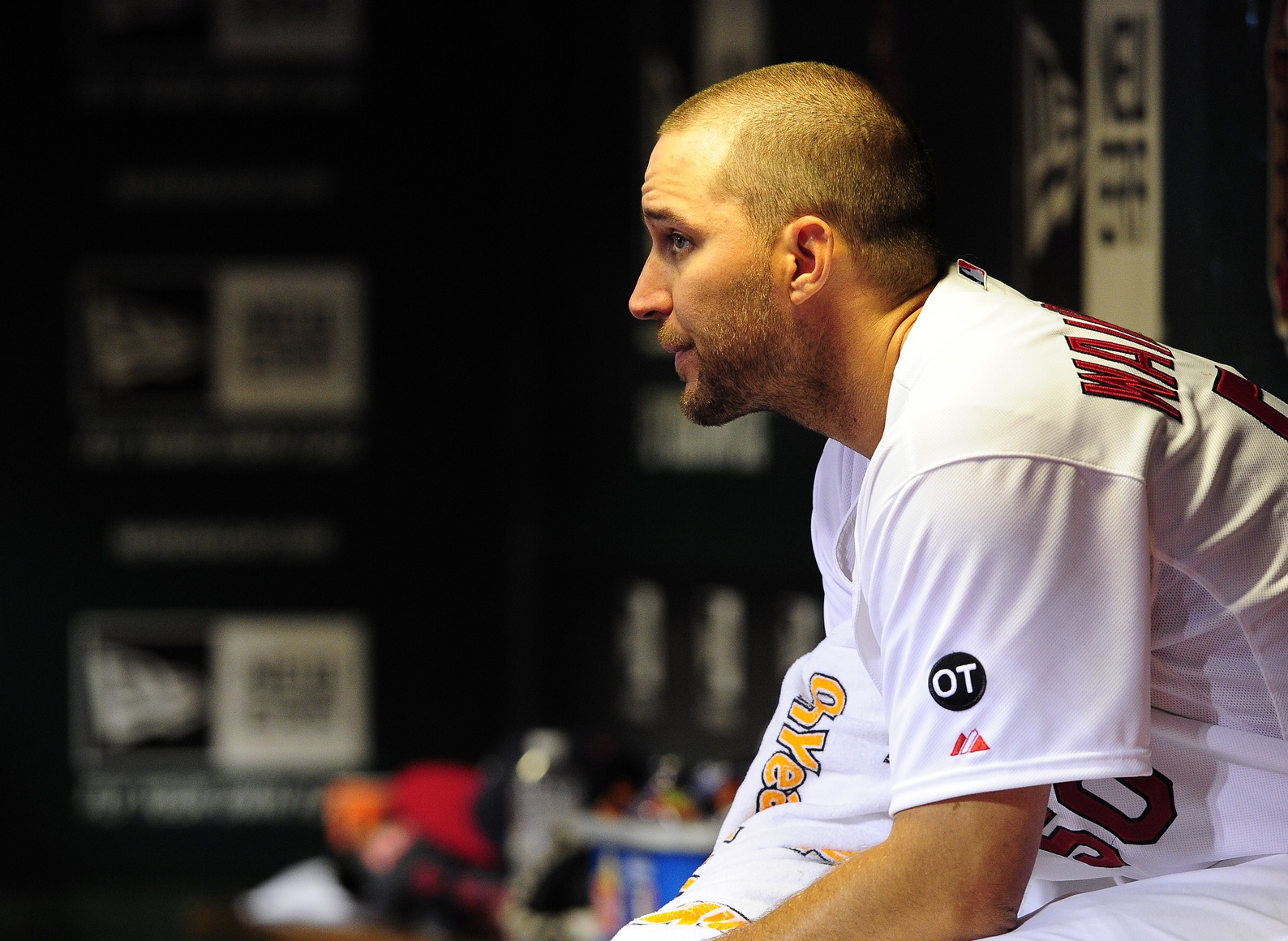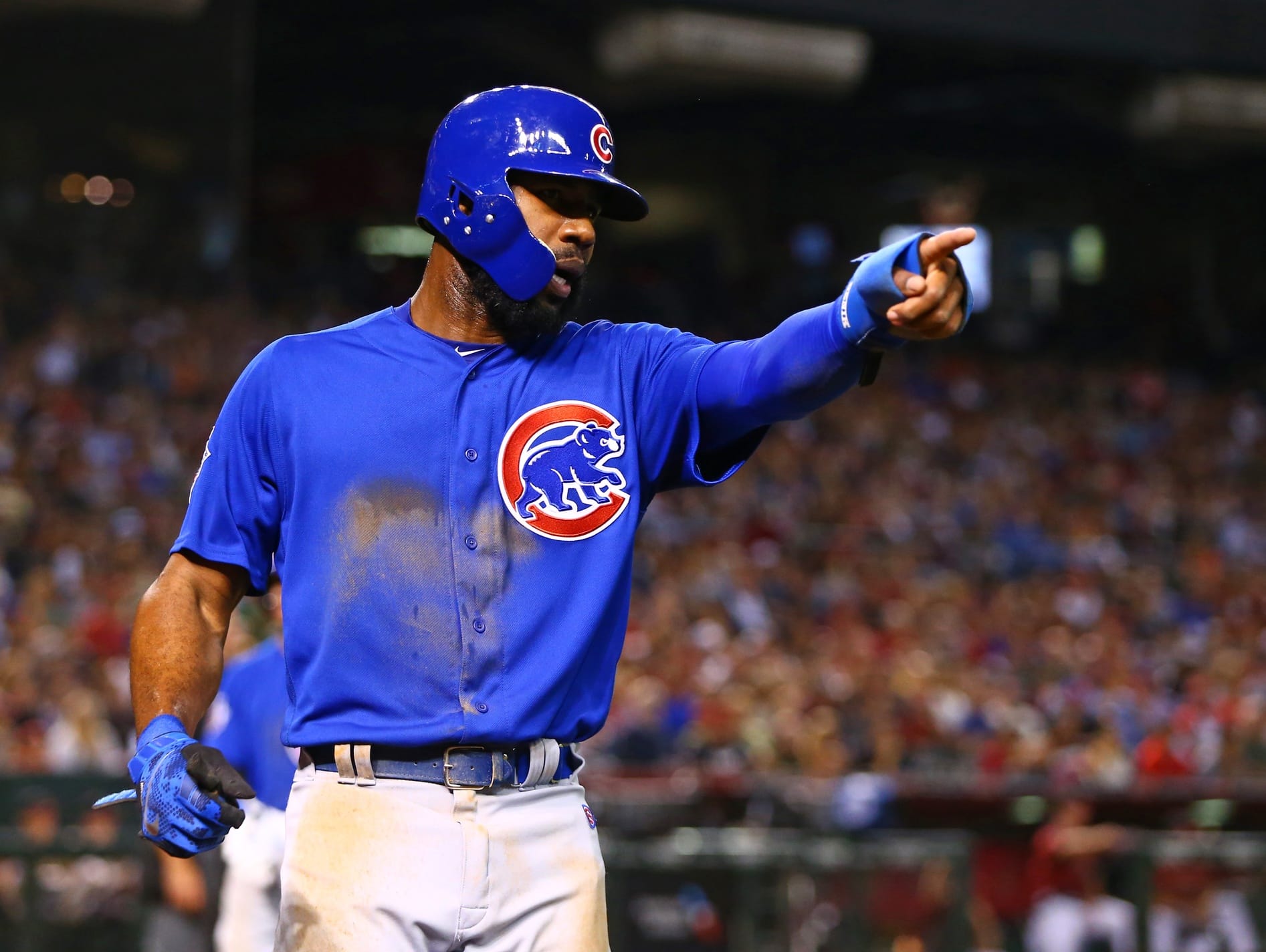
While the early weeks of the MLB season generally bring joy, there are some players that would probably like to hit the reset button and go back to Opening Day. While the names of these players are big, their performance on the young season has been anything but.
For these slumping MLB stars, we offer one thought that can be either good or bad: There’s a lot of baseball left to be played.
These stars would be well advised to use that time to turn their numbers around, or face the prospect of a very long 2016 season which still has more than five months to go.
Madison Bumgarner, starting pitcher, San Francisco Giants
In three starts (16 innings), Bumgarner is allowing loud contact.
Madison Bumgarner went three times through the Dodgers' lineup and allowed an average exit velocity of 94 MPH. pic.twitter.com/9BK2F6dnkn
— Positive Residual (@presidual) April 16, 2016
That’s helped contribute to a 4.50 ERA and 1.63 WHIP. Both are well below average for anyone, but even more so for someone with Bumgarner’s track record.
What’s worse is that the numbers aren’t just due to a specific opponent having a good day. That can happen to anyone, and this early in the year it will throw the numbers out of whack.
The real problem is that Bumgarner’s velocity is down. According to Fangraphs, Bumgarner is averaging 90.4 MPH on his four-seam fastball and 90.7 on the two-seam heater. Throughout 2014 and 2015, he averaged 92 MPH or better on both fastballs. Naturally, his other pitches are also coming in slower.
Given Bumgarner’s track record, it’s too early to panic. But it’s not too early to say that he needs a jolt.
Matt Harvey, starting pitcher, New York Mets

Harvey’s 2016 season is off to a rough start, and it transcends old and new stats.
For you old school folks, Harvey has taken a loss in all three of his starts. For the fans of new stats, Harvey has a below average 4.05 FIP to go along with a gaudy 5.71 ERA and 1.56 WHIP.
Harvey’s fastball velocity has also been down, though not to the same extent as Bumgarner. But while Bumgarner has still found a way to miss bats (11.8 strikeouts per nine innings), Harvey’s pitches have been far more hittable.
Harvey entered the season with a solid K rate of 9.5 hitters per nine innings, but his nine strikeouts in 17.1 innings this season work out to only 4.7 strikeouts per nine. That’s bad for a finesse pitcher and certainly bad for a power arm like Harvey.
It’s definitely early, but hitters are clearly seeing Harvey’s pitches better than they have in the past. That has to change.
Travis d’Arnaud, catcher, New York Mets
If it’s any consolation to Harvey, his battery mate is also struggling in a big way.
Over the 2014 and 2015 seasons, d’Arnaud slashed at .252/.317/.442 and hit 25 home runs. While those numbers may not be eye-popping, they’re solid two-year totals for a catcher who only played 175 games.
In 2016, d’Arnaud has been anemic at the plate. His numbers are so bad that a 1-for-5 game on Tuesday actually improved his batting average, bumping it up to .133, with his full slash line coming in at .133/.257/.167. He’s recorded only four base hits, with one double as is only extra-base hit.
Now, d’Arnaud doesn’t need to be a superstar at the plate. But he does need to produce at a rate similar to what we saw in 2014 and 2015.
It’s clear that d’Arnaud is in need of some kind of spark as his current approach at the plate is producing essentially no results.
Shelby Miller, starting pitcher, Arizona Diamondbacks

Through Miller’s first two starts with the Diamondbacks, there was one constant. Opposing batters hit him and hit him hard.
Shelby Miller, 0-1, 8.18 ERA, has already given up 5 HRs in 11 IP this year for #Dbacks. He gave up only 13 HRs in 205 1/3 IP with #Braves.
— Bob Nightengale (@BNightengale) April 11, 2016
Miller’s home run totals didn’t go up in his third start, but he did allow two runs in only 1.2 innings before exiting with an injury, so things didn’t exactly go smoothly.
While his 6-17 win-loss record didn’t reflect it, Miller was one of baseball’s most effective pitchers in 2015, posting a solid 3.02 ERA.
The problem here is that until this year, Miller has spent his entire career pitching for St. Louis or Atlanta. Unlike his current home park of Chase Field, St. Louis and Atlanta play in cavernous, pitcher friendly parks. Two of Miller’s three starts this year have been at home in Arizona.
It’s very important for Miller to not only pitch well, but to pitch well at home to show the Diamondbacks that he was worth the steep price they paid to get him.
Jacoby Ellsbury, outfielder, New York Yankees
With the exception of one season (32 home runs in 2011), Ellsbury has never been a prolific power hitter. With that in mind the fact that he doesn’t have a home run yet is not a big problem.
The .213 batting average and .260 on base percentage are quite a bit more problematic.
Those numbers are obviously well below what someone with Ellsbury’s track record should be doing. With that said, if he was a notorious slow starter, the bad numbers would be easier to dismiss. Unfortunately, that’s not the case, as Ellsbury’s career .284/.348/.405 slash line in April is more or less on par with his overall line of .288/.342/.423.
The numbers are troubling for a couple other reasons.
One, Ellsbury is only 32, but has a long history of injuries. It’s possible that those have caught up with him and he’s in a state of decline. The Yankees and their fans certainly have to hope that’s not the case, as he’s owed more than $21 million per season through 2020.
Two, New York is an old team. Generally, older teams and players need to start strong, as they’re a little more likely to wear down as the season progresses. If Ellsbury is struggling early, it’s hard to think that he’s going to make those numbers up in a big way late.
Carlos Gomez, outfielder, Houston Astros
Very little has gone right for Carlos Gomez this season.
The @realcarlosgomez guide to home repair: karate kicks. https://t.co/8a0Fh7IJWz pic.twitter.com/zBlJobxPlx
— Cut4 (@Cut4) April 13, 2016
Actually, Gomez has struggled ever since coming over the the Astros from the Milwaukee Brewers at the 2015 trade deadline.
In 74 games with the Brewers last season, Gomez slashed at .262/.328/.423. Not great, but still well ahead of the .242/.288/.383 slash line that he generated after going to Houston. Thus far, 2016 has been even worse, as Gomez has slashed at .196/.213/.283 without a single home run and only one RBI.
Quite simply, this shouldn’t be happening. He’s in a better lineup now, and Minute Maid Park is just as much of a launching pad as Miller Park, especially for right-handed power hitters. Gomez has never been a great on-base guy, but he should be slugging much better.
Somehow, someway, Houston needs to get Gomez’s bat going.
Adam Wainwright, starting pitcher, St. Louis Cardinals

One of the game’s best pitchers for a better part of a decade, Wainwright missed nearly all of the 2015 with an Achilles injury. Thus far, his 2016 performance has been disappointing.
Rough start of season for #STLCards ace Adam Wainwright: 8.27 ERA after 3 starts, yielding 10 hits and 7 ER after 5.1 IP today vs #Reds
— Bob Nightengale (@BNightengale) April 16, 2016
Now, Wainwright has an abundance of experience, which in this case serves to work both for and against him.
On the positive end, Wainwright certainly knows how to recover from a bad couple of starts. Every pitcher, even those as good as Wainwright, has gone through a slump of some sorts. Obviously he has had no problem recovering from his past slumps.
Shifting gears a bit, Wainwright’s experience also means that he’s an old pitcher. Wainwright will turn 35 in August and eventually age catches up to everyone. Wainwright had the Achilles injury last season and Tommy John surgery in 2011, so it’s not like he’s been perfectly healthy since Day 1.
It’s important for the veteran pitcher to soon show that his experience is an asset and not a detriment.
Chris Archer, starting pitcher, Tampa Bay Rays
On the other end of the spectrum opposite Wainwright, we have a young fireballer in Archer.
The good news for Archer is that he’s struck out 23 hitters in 15.1 innings. The 13.5 strikeouts per nine innings is far better than his already strong career mark of nine strikeouts per nine innings.
The problem for Archer is that while he’s missing bats, he’s done very little else right over his first three starts.
The 4.7 walks per nine innings is the most troubling difference. With his strikeouts, it would be easy to dismiss the other downturns as just bad luck. Now, the balls are finding holes. Over his next three starts, they may not.
But walks aren’t a fluke. If a pitcher can’t throw strikes, he leaves his defense no chance to make plays. A high walk rate is indicative of a pitcher who’s just struggling.
Archer has a lot going wrong right now, but he needs to focus on finding the strike zone fast.
Jason Heyward, outfielder, Chicago Cubs

While the early season has been good for the Cubs, the same can not be said for their $184 million man, Jason Heyward.
Like the other hitters we’ve talked about, Heyward has unimpressive slash stats, hitting .170/.267/.208 on the young season. The bigger problem, however, is the strikeout rate.
Heyward has struck out 13 times in 53 at bats, which would put him on pace for about 150 over the course of a full season. Heyward’s career high in strikeouts is 152, which also came in his career best home run season of 2012, when he slugged 27 bombs. If you’re hitting 27 home runs, 152 strikeouts is an acceptable total.
The problem is that other than 2012, Heyward has never hit more than 20. Traditionally speaking, Heyward has kept his strikeout totals down in years when his home run totals were more modest. Right now, he’s sitting at a cool zero home runs but is still on pace to come close to his career high in K’s.
Heyward needs to improve those numbers, which will go up if he can put more balls in play.
Troy Tulowitzki, shortstop, Toronto Blue Jays
We close with Tulowitzki, who, for a few reasons, is different than the other slumping stars.
One, Tulo’s struggles go back to last season.
Only 53 games, but Troy Tulowitzki has a .215/.297/.356 line with Toronto. 56 Ks in 205 ABs. 1 for 18 vs. #RedSox this season
— Pete Abraham (@PeteAbe) April 17, 2016
Two, his struggles have come since leaving the Colorado Rockies and the hitter-friendly confines of Coors Field.
Hitters unquestionably get a boost when hitting at altitude. Whenever one of them leaves the Rockies, they’ll be under a microscope until they show that they can hit at the same rate elsewhere.
So far, Tulowitzki hasn’t done that in Toronto. The problems are even greater when we remember that, while it’s not Coors Field, Rogers Centre isn’t exactly a pitcher’s park.
Tulowitzki needs to break out of this funk fast. Otherwise, the doubt will only continue to grow.